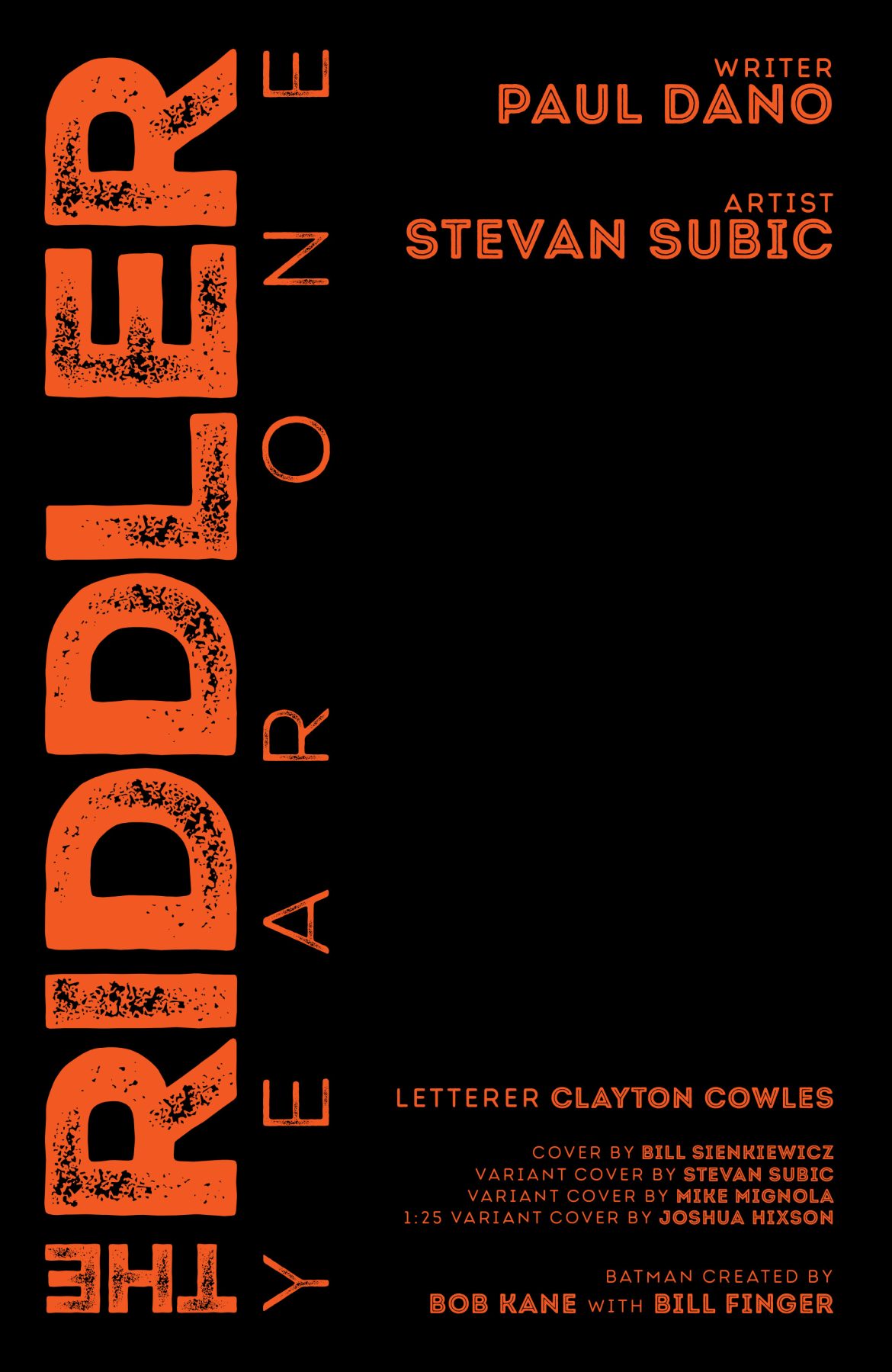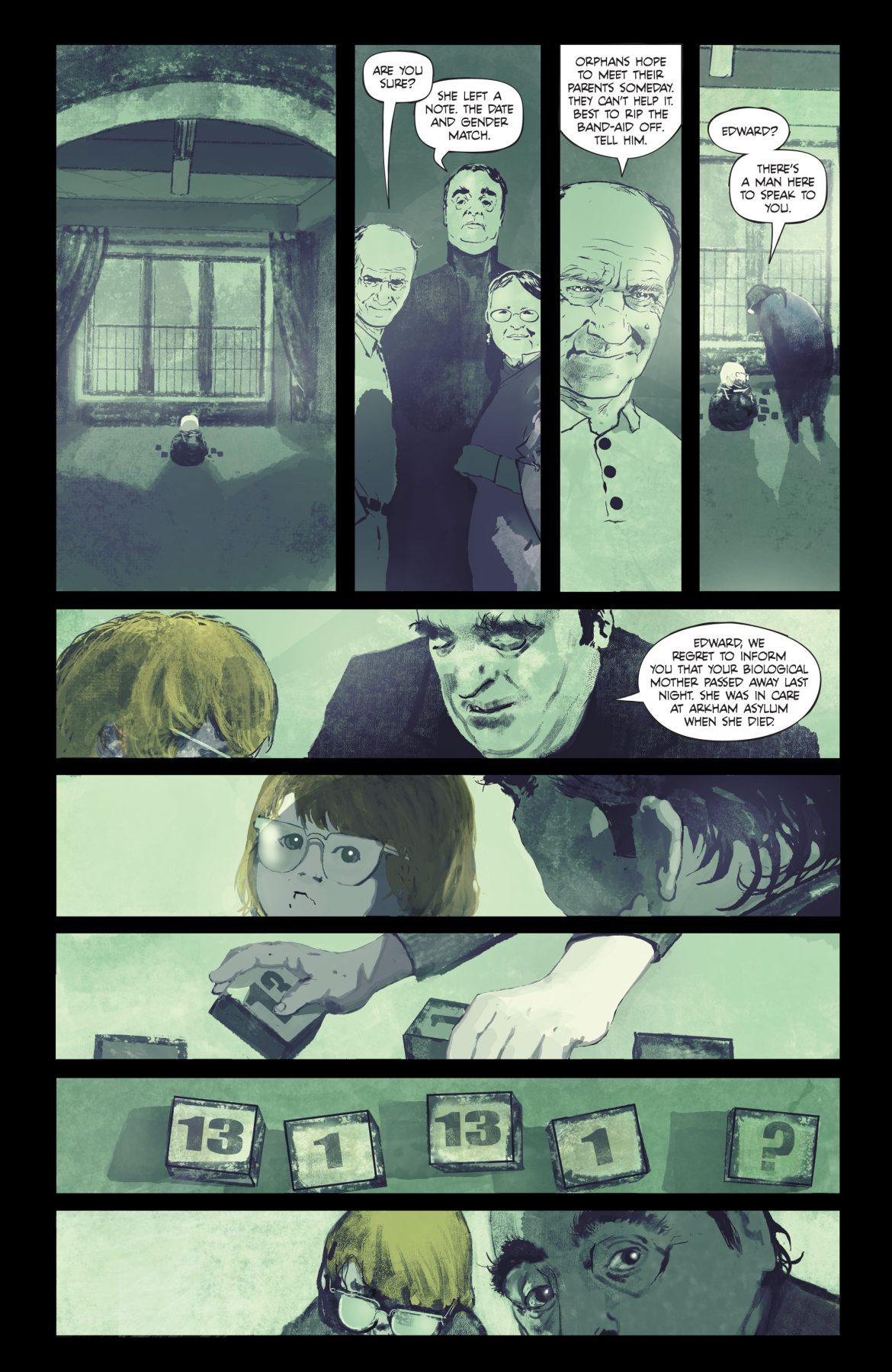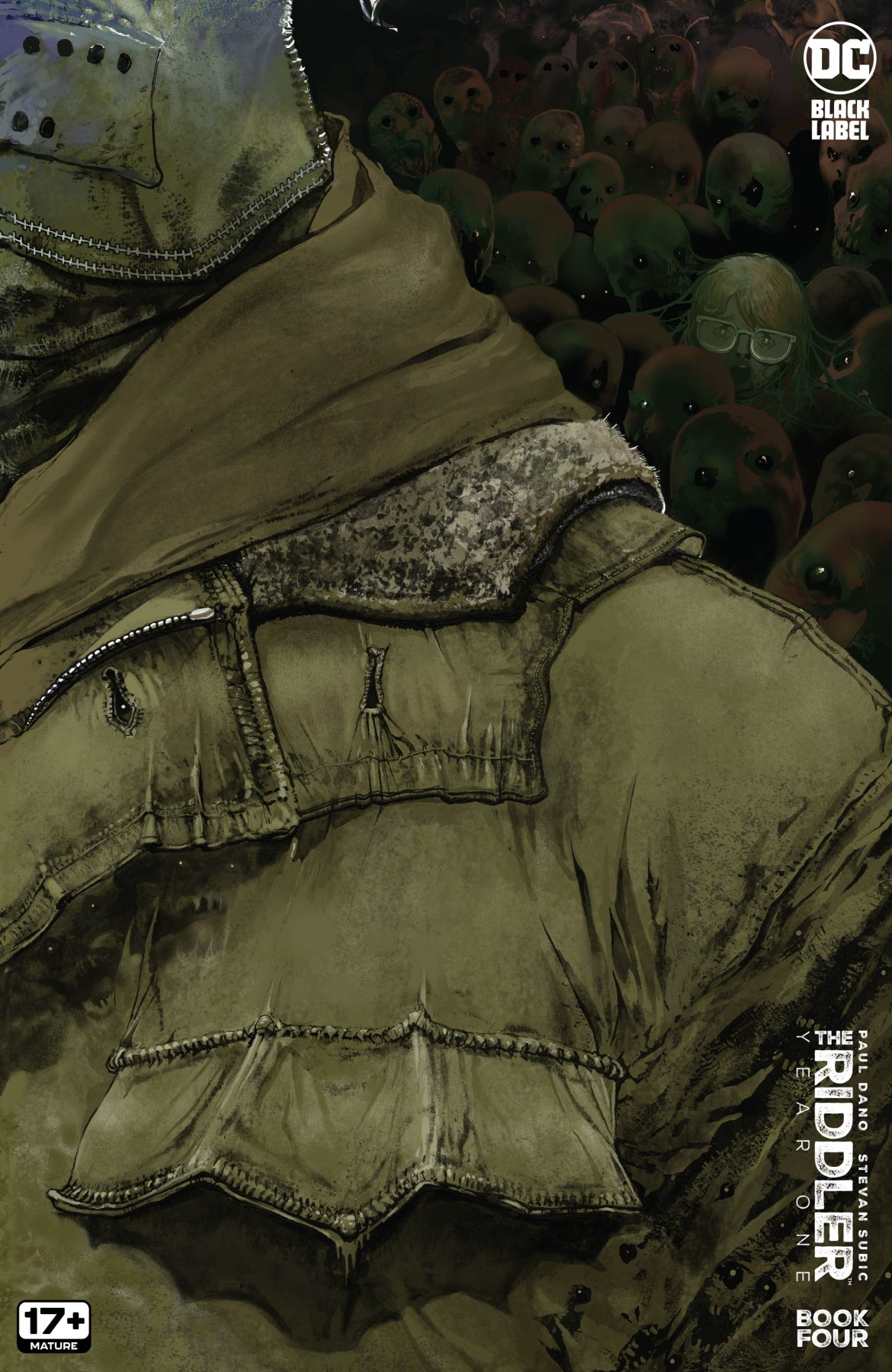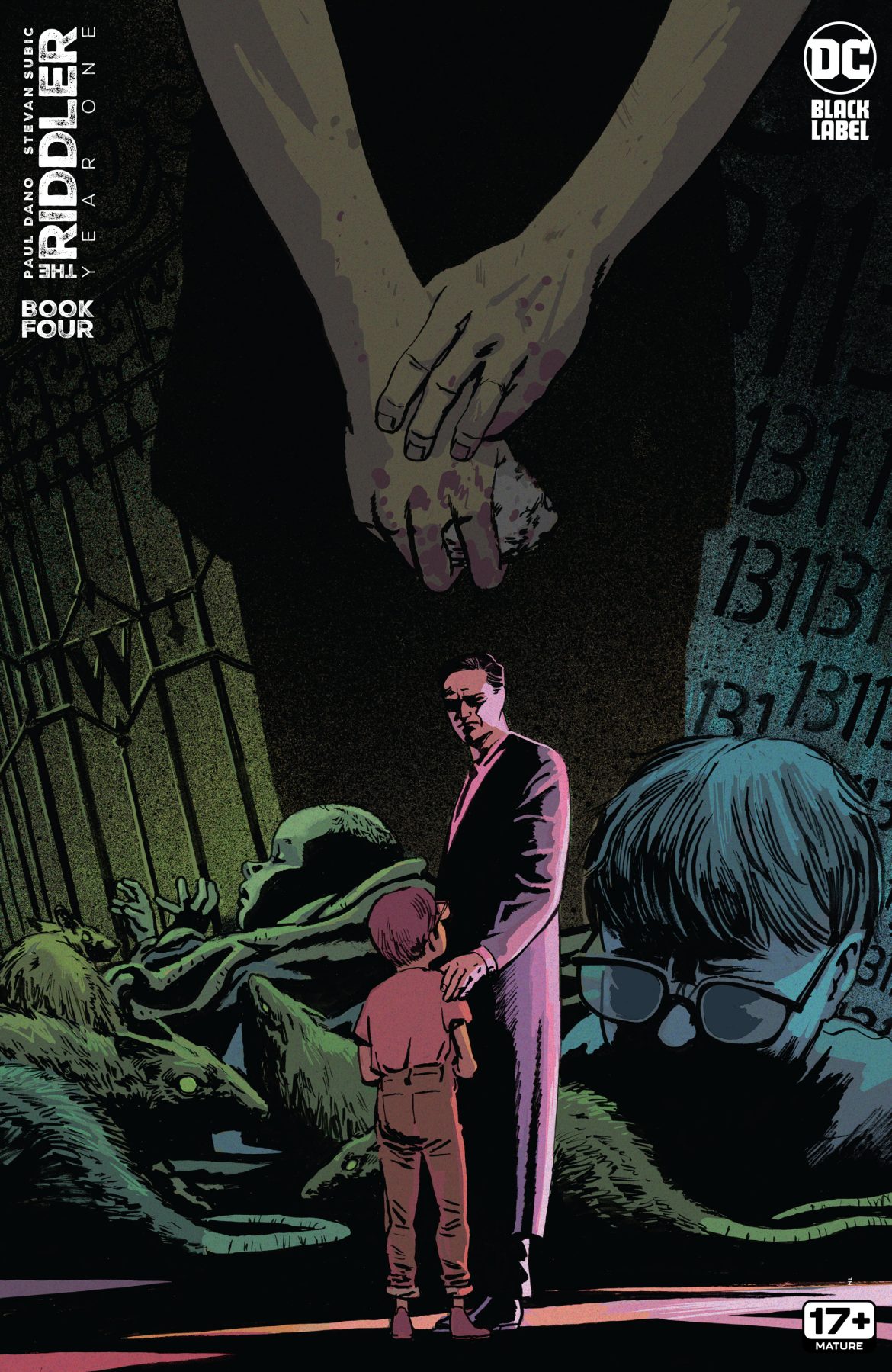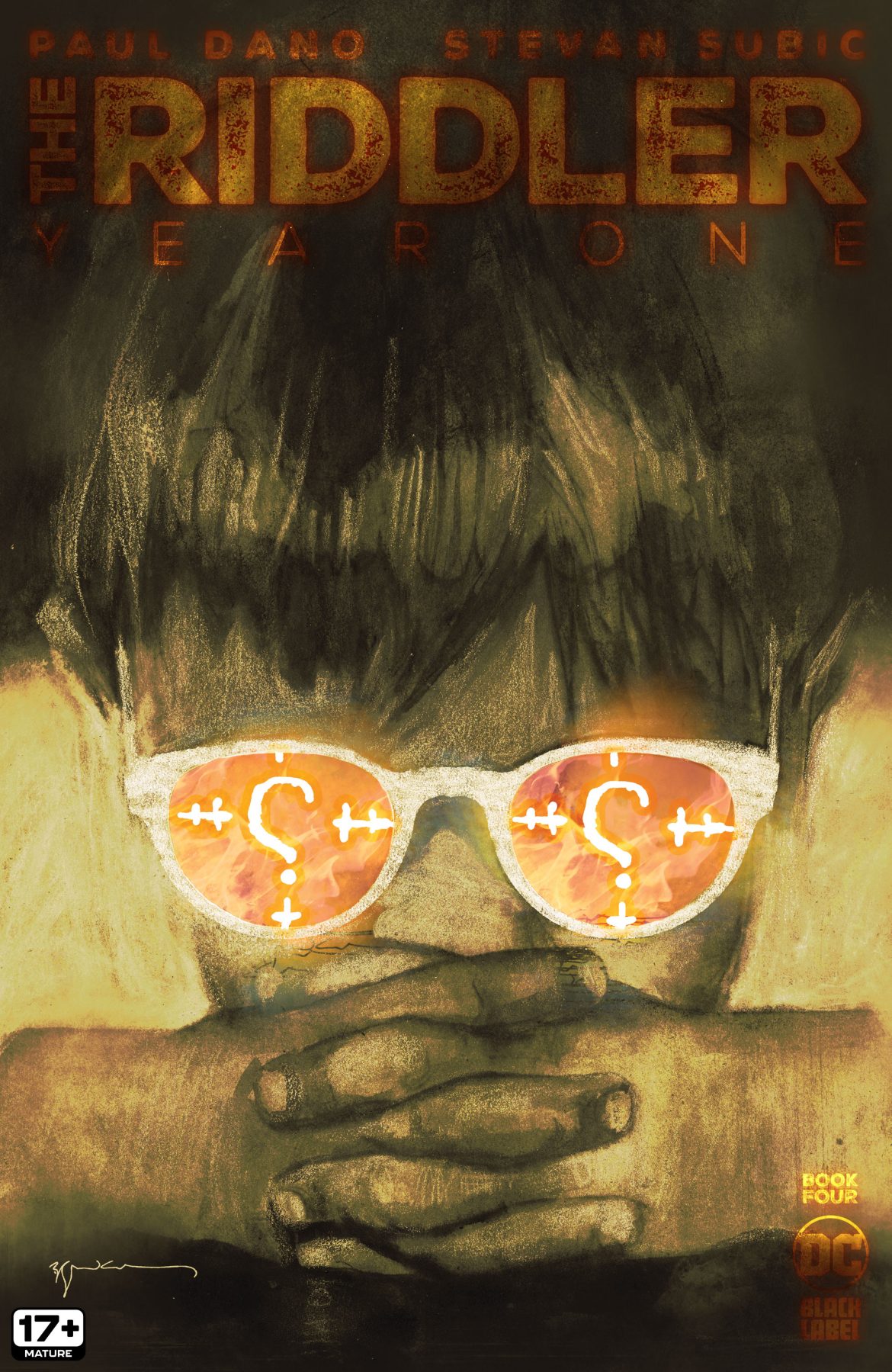“There’s No Place Like Home.”
 Writer: Paul Dano
Writer: Paul Dano
Artist: Stevan Subic
Letterer: Clayton Cowles
Review by Steven Lee Sharpe
The Riddler: Year One #4 puts the main story on hold and takes us back to a time only hinted at in previous issues, when Edward Nashton was a boy growing up in the Gotham Orphanage. It’s here that we find the true seeds of how he became a psychotic villain-in-waiting.
When it was announced that the actor Paul Dano would be writing a comic origin story for the version of the Riddler he played in Matt Reeves’ The Batman (2022) I was prepared for Edward Nashton to be written with empathy.
Dano is renowned for putting copious amounts of research and preparation into his roles, and it was the fact that Reeves was so impressed with the actor’s work that led to him arranging a meeting with DC Comics. What I wasn’t ready for was just how far Dano would flirt with the idea that for a few twists of fate, Edward Nashton could’ve been a good guy.
For three issues we’ve been presented with a lonely, dysfunctional man haunted by mental demons; but still desperately trying to do the right thing, to report the corruption in Gotham that he’s uncovered. In the previous issue, he learned just how far that rot went when he realized that he couldn’t even get help from the police.
As he’s attempted to stand up for the repressed and exploited it’s been easy to find yourself rooting for him and fearing for his safety as he continues to dig for answers. The isolation, the fear, and the confirmation of his paranoia, however, are also proving to be the cause of his mental dismantling.
Armed with a justifiable cause, the quest to solve the riddle of criminal activity has become all-consuming and set him on a misdirected crusade. The issue ends with the words “I know what I must become,” repeated over and over, and Dano’s done a great job in making it look as though Edward had no other choice.
So, why is Edward a troubled person to begin with? Intercut with this story are brief flashbacks to when he was a boy, hinting at years of abuse during his time at the Gotham Orphanage, of which Thomas Wayne was a patron. These scenes have added to the pathos, so it’s fitting that, just as Edward’s on the verge of making use of his demons, Dano takes us back to where those demons took root.
The issue begins with a fantastically drawn page of a wide-eyed, ghostly-faced baby being left at the doorstep of the orphanage, which looks more like the House on Haunted Hill. It’s an appropriate opening because artist Stevan Subic has turned this issue into something like a horror comic.
Dano has said that he spent a lot of time talking with Subic about how they would portray Edward’s story, which has led to a rich partnership that has seen moments of juxtaposition where Dano has been able to write something suggesting a lighter tone whilst allowing Subic to draw out the horror. For example, there’s a lovely moment where Edward, who is largely mute by choice, meets Thomas Wayne and opens up to him (revisiting a scene shown briefly in a previous issue). However, Subic includes an onlooking teacher’s face in the panels which slowly distorts into something demonic.
Just flicking through the issue gives you the impression of a claustrophobic nightmare thanks to the impressionistic imagery and coloring that encompasses phosphorous greens, blacks, greys, and splashes of red. Also, because the story is told through Edward’s childish eyes, and is occasionally blurred like a memory, events are sometimes only hinted at, or lack total clarity, which adds to a sense of unease.
The question is whether a whole issue devoted to a flashback at this stage holds up the overall plotting of the story arc. Certainly, when collected into a graphic novel it may seem like a detour, but with this series, Paul Dano is solving two mysteries about the Riddler; the first is how Edward came to be as we find him in the movie, at war with the Waynes, Falcone, and pretty much anyone in power in Gotham. The second is to show what crazy-paving path led Edward’s mind to become so uniquely twisted.
This fourth issue of The Riddler: Year One addresses the evolution of his feelings towards the Waynes and is crucial in giving insight into his personality. In fact, it practically works as a standalone issue. Showing his past in such a splintered way it turns the Riddler’s mind itself into a riddle.
Conclusion
In a funny way, The Riddler: Year One #4 is the prequel to the prequel. I say funny, but there certainly isn’t any humor to be found here. Dano has created a character that’s the very opposite in tone from The Joker, and this may be the darkest issue so far of an already bleak series.
The title “There’s No Place Like Home” is clearly ironic, because we discover that being placed in the orphanage was the first tragic step into turning Edward Nashton into a villain. Thanks to what happened to the Waynes, there was no Wizard of Oz to save him.
This brilliantly dark series certainly ain’t no fairy tale.

Images Courtesy of DC Entertainment
